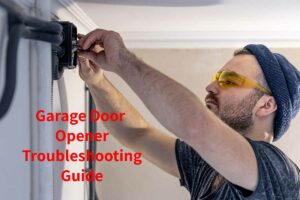Garage door emergency release is an important safety feature that allows you to manually operate your garage door in the event of a power outage or other emergency situation.
It’s essential that homeowners understand how to properly disengage and re-engage the emergency release to ensure safe and effective operation of their garage door system.
In this article, we will guide you through the steps on how to disengage and re-engage your garage door, as well as provide some tips on preventing problems from occurring.
Additionally, we will touch on garage door opener repair and replacement in Bradenton FL, as these services may be necessary in the event of a malfunctioning garage door.
What is Garage Door Emergency Release?
The emergency release on a garage door is typically a red handle or rope that hangs down from the center rail of your garage door opener system. When pulled, the emergency release disengages the opener’s motor and allows you to manually operate the garage door.
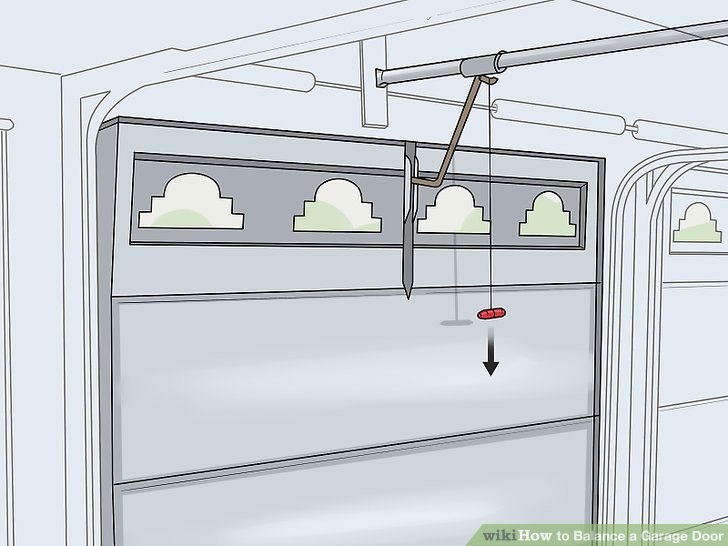
Why is Garage Door Emergency Release Important?
Garage door emergency release is important for several reasons. First and foremost, it allows you to manually operate your garage door in the event of a power outage or other emergency situation.
This can be crucial if you need to get your car out of the garage during a blackout or if you need to evacuate your home in an emergency.
Additionally, knowing how to properly disengage and re-engage the emergency release can help to prevent damage to your garage door system.
If the garage door is accidentally opened while the opener is still engaged, it can cause the opener’s motor to burn out or damage the door itself.
How to Disengage Your Garage Door:
The first step in disengaging your garage door is to locate the emergency release cord. This cord is typically a red handle or rope that hangs down from the center rail of your garage door opener system.
Once you’ve located the cord, pull it down and away from the garage door to release the opener’s locking mechanism.
Next, you will need to manually lift the garage door. It’s important to note that garage doors can be quite heavy, so be sure to use caution and enlist the help of another person if necessary.
To lift the door, grasp it firmly with both hands and lift upward, using your legs to help push the door up. Once the door is fully open, you can stop lifting and let the door rest in place.
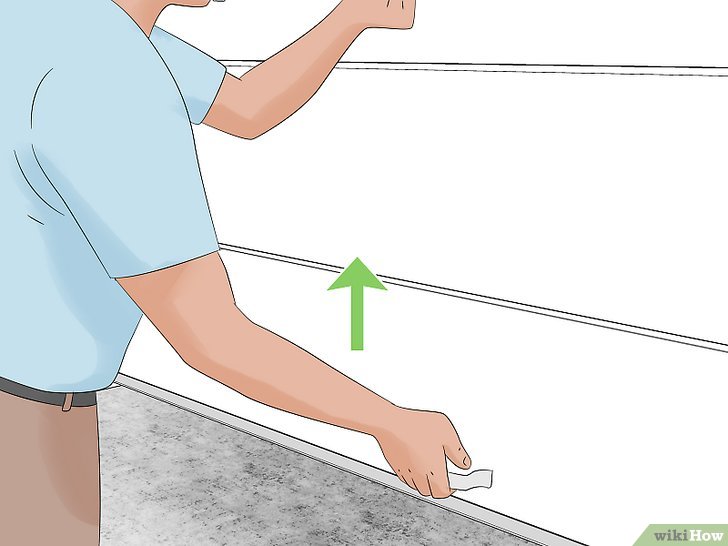
Steps For Disengaging Your Garage Door:
- Start by manually lowering the garage door until it is about halfway down. Make sure to let go of the door and allow it to rest in place.
- Locate the emergency release cord. This cord is typically a red handle or rope that hangs down from the center rail of your garage door opener system.
- Pull the emergency release cord towards the door until you hear a clicking sound. This indicates that the opener’s locking mechanism has been engaged.
- Now it’s time to test the garage door to ensure that it’s functioning properly. Press the button on your garage door opener remote or wall control to activate the opener.
- If the opener is working correctly, it should be able to lift the garage door smoothly and effortlessly. If the opener is struggling or the door is not lifting evenly, you may need to call a professional garage door repair technician to inspect and repair the system.
- Once you’ve confirmed that the garage door is functioning properly, you can manually lift the door to the fully closed position.
It’s important to note that once you have disengaged the emergency release, your garage door will no longer be secured by the opener’s locking mechanism. To prevent unauthorized access to your garage, make sure to lock the door using the manual lock or other security measures.
How to Re-Engage Your Garage Door:
To re-engage your garage door, start by manually lowering the door until it is about halfway down. Then, let go of the door and allow it to rest in place.
Next, locate the emergency release cord and pull it towards the door until you hear a clicking sound. This indicates that the opener’s locking mechanism has been engaged.
Now it’s time to test the garage door to ensure that it’s functioning properly. Press the button on your garage door opener remote or wall control to activate the opener.
If the opener is working correctly, it should be able to lift the garage door smoothly and effortlessly. If the opener is struggling or the door is not lifting evenly, you may need to call a professional garage door repair technician to inspect and repair the system.
Steps for How to Re-Engage Your Garage Door
- Start by manually lowering the garage door until it is about halfway down. Make sure to let go of the door and allow it to rest in place.
- Locate the emergency release cord. This cord is typically a red handle or rope that hangs down from the center rail of your garage door opener system.
- Pull the emergency release cord towards the door until you hear a clicking sound. This indicates that the opener’s locking mechanism has been disengaged.
- Check the tracks and make sure that they are clear of any debris or obstructions. You can also use a level to ensure that the tracks are properly aligned.
- Once you’ve confirmed that the tracks are clear and aligned, manually lift the garage door to the fully open position. You may need the assistance of another person to help lift the door.
- With the door in the fully open position, gently lower it back down to the halfway point. Make sure to do this slowly and carefully, as the door may be heavier than you expect.
- Now it’s time to re-engage the garage door opener. Pull the emergency release cord towards the motor until you hear another clicking sound. This indicates that the locking mechanism has been re-engaged.
- Finally, test the garage door to ensure that it’s functioning properly. Press the button on your garage door opener remote or wall control to activate the opener.
- If the opener is working correctly, it should be able to lower the garage door smoothly and effortlessly. If the opener is struggling or the door is not lowering evenly, you may need to call a professional garage door repair technician to inspect and repair the system.
Preventing Problems from Occurring:
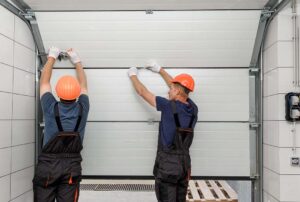
One of the best ways to prevent problems with your garage door is to keep it well-maintained. This includes regular cleaning and lubrication of the moving parts, as well as periodic inspections to check for any signs of wear or damage.
If you notice any issues with your garage door, such as strange noises, slow operation, or uneven movement, it’s important to address them as soon as possible to prevent further damage or safety hazards.
Another important aspect of preventing problems with your garage door is to ensure that the system is installed and operated correctly. This includes proper installation of the opener system, as well as following the manufacturer’s instructions for operation and maintenance.
If you’re unsure about how to properly operate your garage door or opener system, consult the owner’s manual or contact a professional garage door technician for assistance.
Garage Door Opener Repair and Replacement:
In some cases, problems with your garage door may require professional repair or replacement of the opener system. This may be necessary if the system is damaged or worn beyond repair, or if you’re experiencing frequent problems with the system.
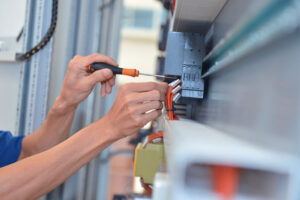
Common signs that you may need garage door opener repair or replacement include:
- The opener is making unusual noises, such as grinding or clicking sounds
- The opener is struggling to lift the garage door or is lifting it unevenly
- The opener is not responding to remote or wall control commands
- The opener is more than 10 years old and has not been properly maintained
If you’re experiencing any of these issues with your garage door opener, it’s important to contact a professional garage door repair technician for assistance. They can
inspect the system and recommend the appropriate course of action, whether it be repair or replacement.
When it comes to choosing a new garage door opener, there are several factors to consider. These include the type of drive system (belt, chain, or screw), the horsepower of the motor, and the safety features included with the opener.
It’s also important to choose an opener that is compatible with your garage door and that fits within your budget.
In addition to garage door opener repair and replacement, a professional garage door technician can also provide routine maintenance services to keep your garage door system functioning smoothly.
This includes lubrication of the moving parts, adjustment of the opener system, and inspection for signs of wear or damage.
Regular maintenance can help to prevent problems from occurring and extend the lifespan of your garage door system.
Conclusion:
In summary, knowing how to properly release and reset the emergency cord on your garage door is an essential skill for homeowners.
By following the steps outlined in this article, you can safely and effectively disengage and re-engage your garage door in the event of a power outage or other emergency situation.
Additionally, taking steps to prevent problems from occurring with your garage door, such as regular maintenance and proper operation, can help to extend the lifespan of your system and ensure its safe and efficient operation.
If you do experience problems with your garage door or opener system, contacting a professional garage door technicians for repair or replacement services can help to resolve the issue quickly and effectively.

